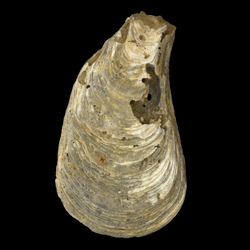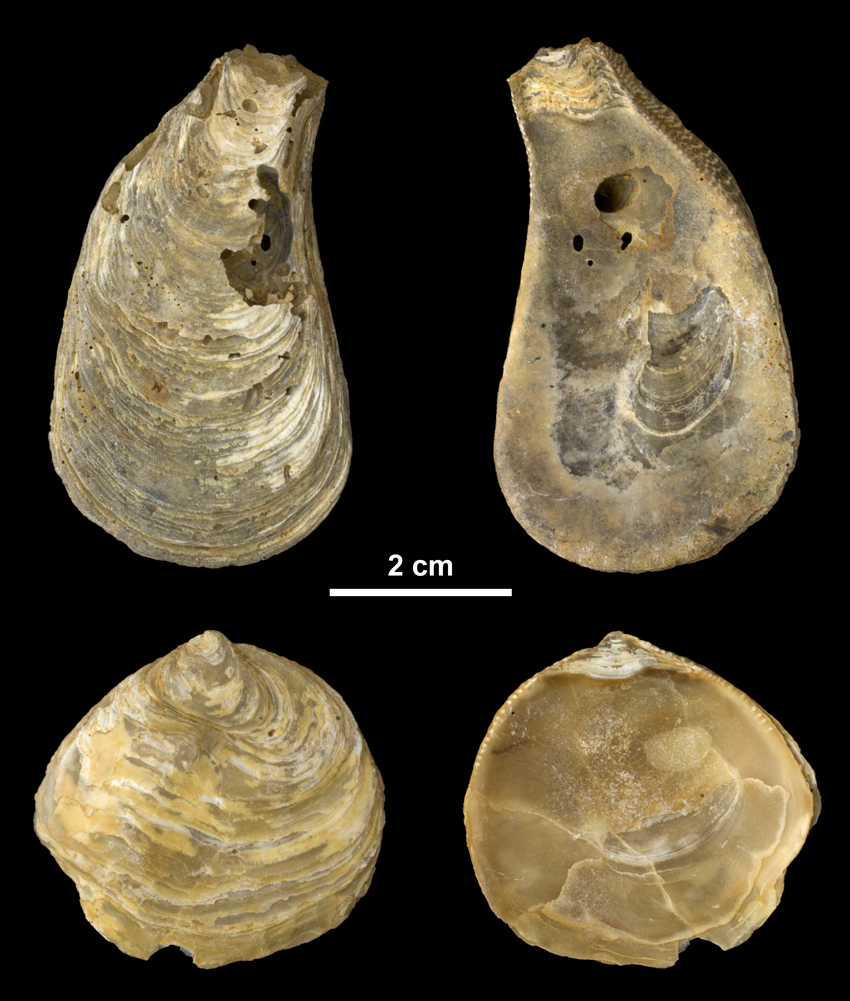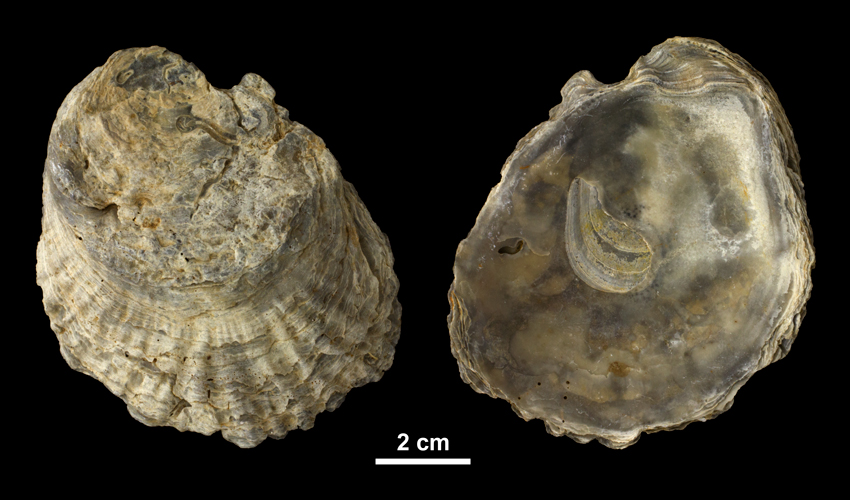
Ostrea carolinensis

Geological Range
Early to Middle Miocene; Extinct.
Paleogeographic Distribution
Virginia and Maryland; species originally described from South Carolina.
Remarks
Original description (from Conrad, 1832, p. 45):
"Obovate, oblique, thick, compressed; superior valve flat inferior valve convex, with concentric imbricated laminae which are transversely plicated; beaks broad and prominent; fosset large and defined by broad prominent lateral ridges.
Locality. Santee Canal, S. C.
A large and handsomely plicated oyster, having considerable resemblance to O. compressirostra of Say, but the beaks in that species are very small and compressed, whilst in the former they are broad and prominent, and the shell attains a greater size and thickness with an approach to a falcate form.
Numbers were thrown up in excavating the Santee canal, and from its abundance in South Carolina, I have given the specific name Carolinensis. As I have not seen it in situ, and am ignorent [sic] of its accompanying fossils, I cannot positively refer it to the Middle Tertiary, to which it probably belongs."
To access this description in its original formatting through the Biodiversity Heritage Library, click here.
Stratigraphic Occurrences
- Middle Miocene
- Chesapeake Group (formation unknown) (MD) (Age not resolved beyond "Miocene")
- Choptank Formation (VA) (Age not resolved beyond "Miocene")
- Early Miocene
- Calvert Formation (MD)


